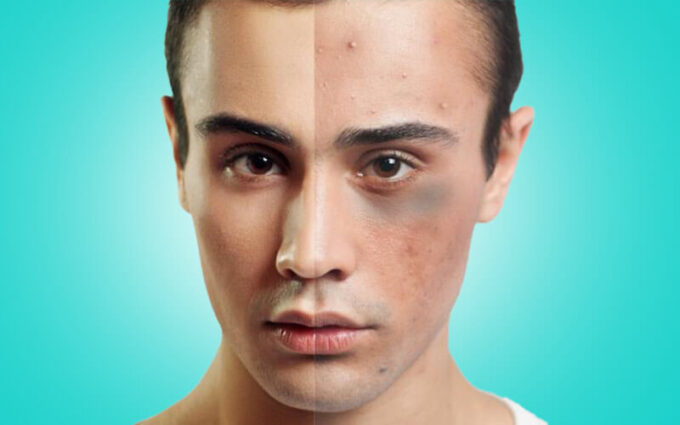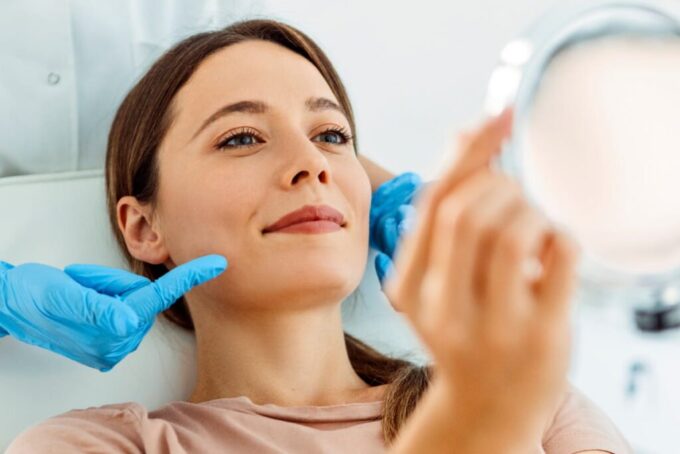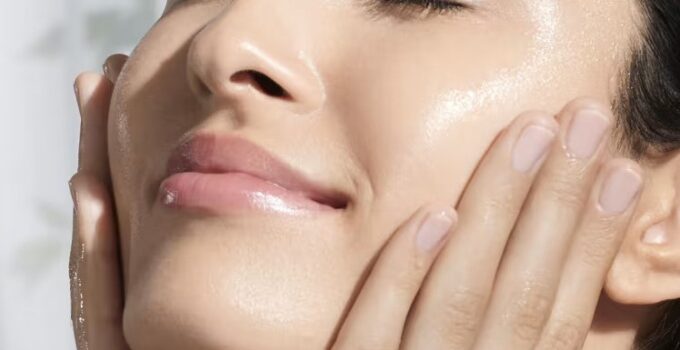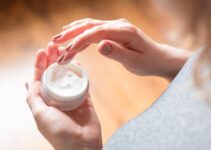Botox aftercare plays a pivotal role in not just enhancing the outcomes of the treatment but also in ensuring its longevity and safety. After investing in Botox, it’s crucial to follow through with proper care to maintain the aesthetic benefits and minimize potential side effects.
Effective aftercare begins immediately after the procedure and continues through the healing process, impacting both the immediate appearance and the long-term preservation of the results. This commitment to aftercare is essential for maximizing the value of your investment in Botox and ensuring the most satisfactory outcomes.
Immediate Aftercare Strategies
Avoiding Touch and Pressure on Treated Areas

Source: wholehealthjc.com
One of the fundamental tips for Botox aftercare involves avoiding any unnecessary touch or pressure on the treated areas. This precaution helps to prevent the dispersion of Botox to adjacent muscles, which could potentially alter the intended effects of the treatment.
It’s recommended to avoid rubbing, massaging, or applying pressure for at least 24 hours after the procedure.
The Crucial First Hours: Posture and Activities
The first few hours following a Botox procedure are critical in ensuring the toxin remains localized to the target area. Patients are advised to maintain an upright position and avoid bending over or lying down for 4 to 6 hours post-treatment.
This posture helps prevent Botox from migrating, ensuring it works only where intended. Additionally, it’s wise to limit physical activities that could increase blood flow to the face, as this could potentially diminish the treatment’s effectiveness.
Heat Exposure and Exercise

Source: mi-skin.com
In the days following your Botox treatment, it’s important to avoid exposure to excessive heat and refrain from vigorous exercise. Heat can cause vasodilation, increasing the risk of swelling and bruising at the injection sites.
Similarly, strenuous activities can elevate blood pressure and heart rate, potentially causing Botox to spread beyond the targeted muscles and leading to undesired effects. Cooling the skin gently and keeping activities light and non-strenuous are key components of effective Botox aftercare.
Sleep Positions and Their Impact
Post-Botox tips include knowing that sleeping positions can influence the treatment’s effectiveness.
For the first few nights, it’s advisable to sleep on your back to avoid putting pressure on the treated areas. This position helps maintain the precise placement of Botox, ensuring that it affects only the intended muscles and areas.
Adjusting sleep habits temporarily can be a small but significant step in maximizing the botox maintenance process, contributing to lasting and satisfying results.
Managing Side Effects and Discomfort
Identifying Common Side Effects

Source: cbamclinic.com
Swelling and bruising are among the most common side effects experienced after Botox injections.
These reactions are typically mild and resolve on their own within a few days. Swelling occurs due to the body’s natural response to the needle insertion and the injection of the substance into the skin. Bruising, on the other hand, can happen if small blood vessels are nicked during the procedure. Both are generally not cause for concern and are part of the body’s healing process.
Natural Remedies and Medical Solutions for Side Effects
Managing the side effects associated with Botox treatments is essential for a comfortable recovery process. Both natural remedies and medical solutions play a crucial role in mitigating common issues like swelling and bruising. Incorporating these strategies can enhance your healing experience and improve the overall outcome.
Here’s a closer look at effective methods to address these concerns:
- Cold Compresses: The application of a cold compress to the affected area immediately following the procedure and at intervals afterward is highly beneficial. The coldness helps to constrict blood vessels, which in turn minimizes the accumulation of fluid under the skin and reduces the appearance of bruising.
- Arnica Montana: Renowned for its anti-inflammatory and healing properties, Arnica Montana is a natural remedy that can significantly aid in the healing process. Whether you choose to take Arnica supplements or apply Arnica gel directly to the treated areas, this herb can help speed up the resolution of bruises and reduce inflammation, making it a popular choice among those seeking natural healing solutions.
- Avoiding Blood-Thinning Medications and Supplements: To minimize the risk of bruising, it’s important to avoid blood-thinning medications and supplements both before and after your Botox treatment. Substances such as aspirin, ibuprofen, and vitamin E are known to increase bruising by affecting blood clotting.
- Hydration: Proper hydration is key to a successful recovery process. Drinking plenty of water helps your body to flush out toxins more efficiently and can decrease the likelihood of swelling. Ensuring adequate water intake supports overall health and aids in the healing process following Botox treatments.
- Medical Interventions: In cases where swelling or bruising is significant, your healthcare provider may suggest over-the-counter or prescription remedies. These medical interventions are designed to manage these effects more effectively, offering relief and speeding up recovery.
Incorporating these strategies into your botox post-treatment can significantly alleviate common side effects, leading to a more comfortable and expedited healing process. Whether opting for natural remedies or following medical Botox advice, the goal is to support your body’s recovery while maximizing the benefits of your Botox treatment.
Follow-Up Care and Assessments
The Role of Follow-Up Visits
Follow-up visits play a crucial role in the aftercare for botox process, serving as a vital checkpoint to assess the effectiveness of the treatment and to address any concerns or adjustments that may be needed.
Typically scheduled a few weeks after the initial procedure, these appointments allow the provider to evaluate the results as the Botox has fully taken effect. This is the time to discuss any touch-ups or additional treatments that might be required to achieve the desired outcome.
Adjusting Treatment Plans Based on Results

Source: mountainradiance.com
The frequency and dosage of Botox treatments may need to be modified based on how the patient’s skin and muscles respond to the initial injections.
These adjustments are made to ensure that the aesthetic or therapeutic goals continue to be met, while also taking into account any changes in the patient’s preferences or the natural aging process. A personalized treatment plan, adaptable to the patient’s evolving needs, is key to achieving long-term satisfaction.
Med Spa Botox Treatments
The Importance of Expertise and Experience
Selecting a skilled provider for Botox treatments is paramount to ensuring safe, effective, and satisfying results. The expertise and experience of the practitioner play a crucial role in the outcome of your treatment.
Here are detailed criteria to consider when evaluating a provider’s qualifications and track record:
- Certifications and Qualifications: It is essential to verify the credentials of the practitioners. Look for board-certified dermatologists, plastic surgeons, or other medical professionals who have undergone specialized training in Botox injections. These certifications indicate that the provider has met rigorous standards of education, knowledge, and skill in the field of aesthetic medicine.
- Reputation and Reviews: Positive feedback and high ratings are strong indicators of a provider’s competence, skill, and quality of patient care. Reviews can also reveal insights into the provider’s approach, bedside manner, and the overall experience offered at their clinic. A reputable provider with consistently positive reviews is likely to deliver the desired outcomes with a focus on patient safety and satisfaction.
- Before and After Gallery: Requesting to see a portfolio of the provider’s work is a valuable step. Before and after photos offer a clear visual representation of the results achieved for other patients. This can provide insight into the provider’s aesthetic style, skill level, and the types of outcomes you might expect for yourself.
- Consultation Process: A thorough consultation should be an integral part of the provider’s practice. This initial meeting is an opportunity for the provider to fully understand your aesthetic goals, discuss potential treatment options, and address any concerns you may have. It also allows you to assess the provider’s expertise, communication style, and whether they make you feel comfortable and informed.
- Ongoing Education: The field of aesthetic medicine is continually evolving, with new techniques, products, and best practices emerging regularly. A commitment to ongoing education and staying up-to-date on the latest advancements in Botox treatments and aesthetic procedures demonstrates a provider’s dedication to excellence.
Evaluating these criteria when choosing a Botox provider will help you make an informed decision and select a practitioner who can meet your needs and expectations. The importance of expertise and experience cannot be overstated, as they are fundamental to achieving optimal results and ensuring your safety and satisfaction with the procedure.
Conclusion

Source: youthfulinfusionmedspa.com
Looking ahead, maintaining the results of your Botox treatment involves scheduling timely follow-up appointments, adhering to a customized maintenance plan, and making positive lifestyle choices.
Regular check-ins with med spa services allow for adjustments to your treatment plan as needed, ensuring your satisfaction over time. Additionally, protecting your skin from the sun, staying hydrated, and following a healthy diet can maximize botox longevity.
Embracing a holistic approach to aftercare and maintenance will help you enjoy the full benefits of your Botox treatments, keeping you satisfied with your appearance long-term.







